The Stories Told by Lewis & Clark’s Historic Buildings
Historian Stephen Dow Beckham documents three early-20th-century estates.
Open gallery
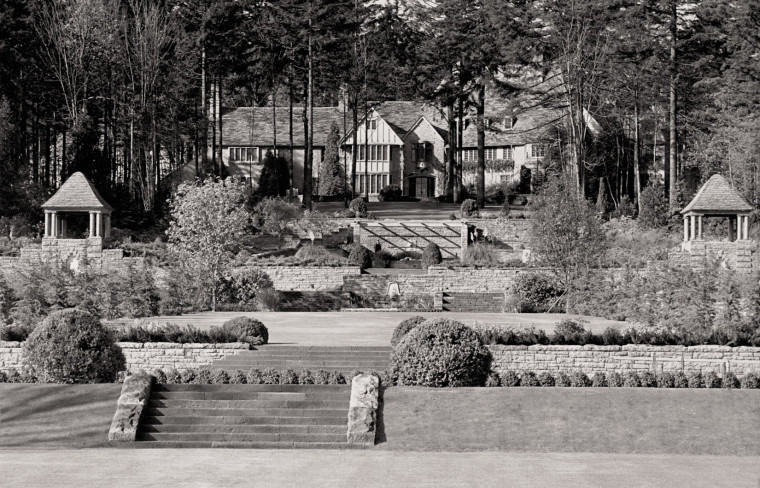
Historian Stephen Dow Beckham documents three early-20th-century estates.
by Judy McNally
When one experiences the beauty of the Lewis & Clark campus, it’s only reasonable to wonder: how did such a stunning setting for learning come about? Now, thanks to a historian’s curiosity, tool kit, and energy, that question can readily be answered.
Lewis & Clark, it turns out, owns not just one but three historically significant estates, each built in the 1920s and all with ties to families that were important to the economic and cultural development of Portland. The stories of the families, their homes, and how each property became part of Lewis & Clark are now available in a handsome volume written by Stephen Dow Beckham, the Dr. Robert B. Pamplin Jr. Professor of History.
In Fortune and Friendship: Lewis & Clark’s Heritage Properties, readers are treated to many insights Beckham uncovered in his research. The book is generously illustrated with current color photographs by Robert Reynolds as well as archival photographs and drawings.
The three key properties begin, of course, with Frank Manor House on the Fir Acres undergraduate campus. The manor house was commissioned by Lloyd Frank, scion of a leading merchant family in Portland. Painstakingly maintained and respectfully remodeled over the years, this iconic structure has welcomed generations of prospective students, alumni, and friends of the institution since 1942.
The second estate, Corbett House, was originally built in the 1920s for the Hamilton Corbett family. Lewis & Clark purchased the 18-acre property in 2000 from the Sisters of St. Francis, a Catholic teaching order. The Graduate School of Education and Counseling and other offices occupy the site, now known as South Campus.
Cooley House, originally the home of the Cameron Squires family, was owned by two other Portland families before becoming Lewis & Clark’s presidential residence in 2002. The half-timbered home with spacious grounds, located in Dunthorpe about three miles south of the main campus, provides a fitting setting for the formal entertaining that is an important part of a president’s job.
Beckham has long been captivated by the stories of these buildings and their landscapes. Among his many books, he wrote the large-format history Lewis & Clark College (1992); for that he researched Fir Acres and Frank Manor House. More recently, once the Corbett and Cooley houses were also part of Lewis & Clark, he was eager to document them as well.
-
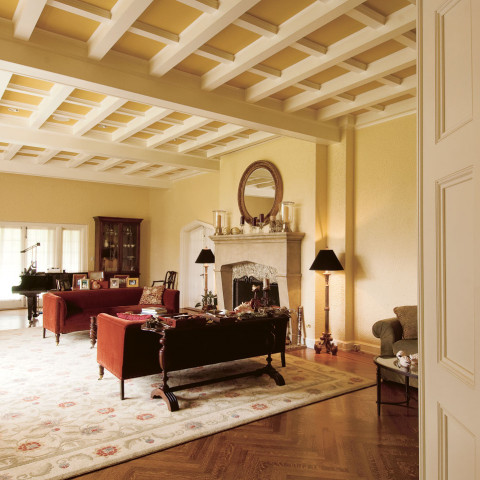 Cooley House living room
Cooley House living room -
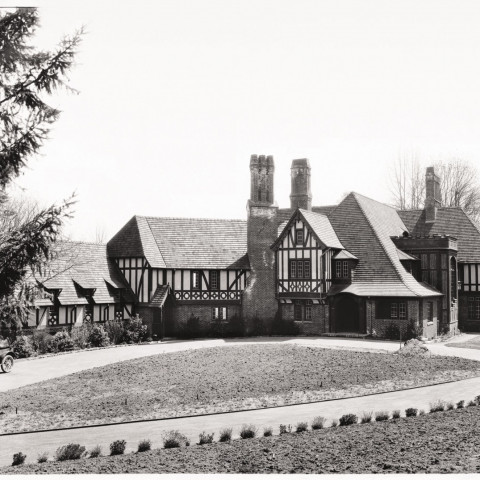 Cooley House (ca. 1928–29) was designed by Ellis Lawrence for Cameron and Claire Squires and built in 1924. Philanthropist Sue Cooley donated it to Lewis & Clark for use as a president’s residence in 2002.
Cooley House (ca. 1928–29) was designed by Ellis Lawrence for Cameron and Claire Squires and built in 1924. Philanthropist Sue Cooley donated it to Lewis & Clark for use as a president’s residence in 2002. -
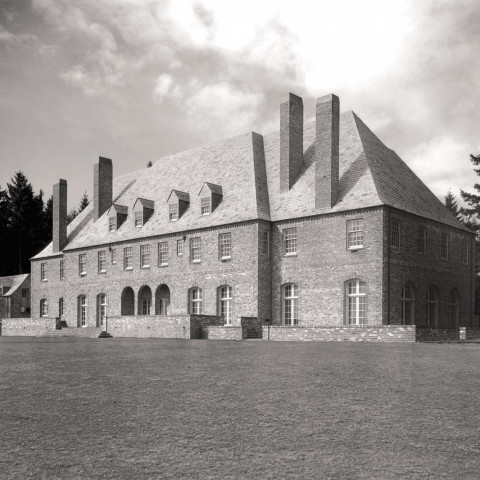 Corbett House (above), designed by Pietro Belluschi for Hamilton and Harriet Corbett, was completed in 1929. In 2000 the 18-acre property became Lewis & Clark’s South Campus, home to the Graduate School of Education and Counseling, College Outdoors, and other administrative offices.
Corbett House (above), designed by Pietro Belluschi for Hamilton and Harriet Corbett, was completed in 1929. In 2000 the 18-acre property became Lewis & Clark’s South Campus, home to the Graduate School of Education and Counseling, College Outdoors, and other administrative offices. -
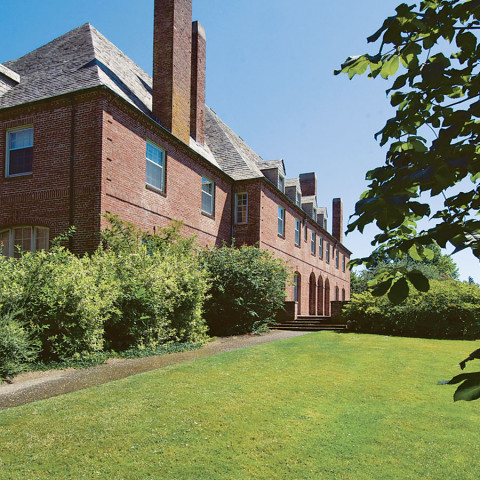 Corbett House
Corbett House -
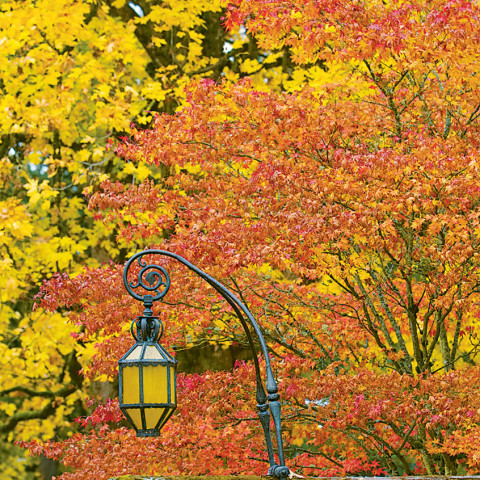 Gatehouse lantern
Gatehouse lantern -
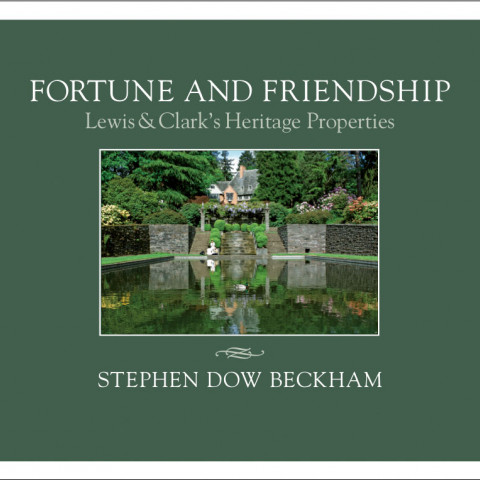 Book cover
Book cover -
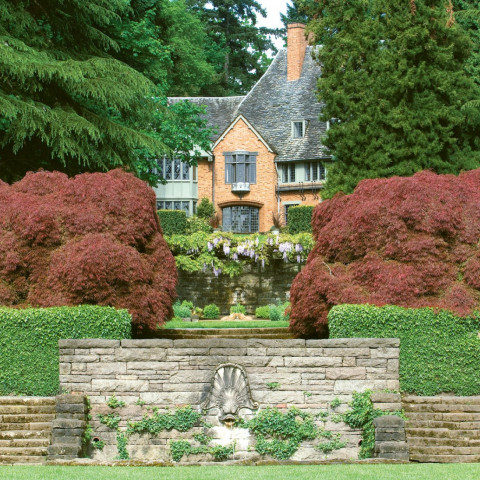 Frank Manor House
Frank Manor House -
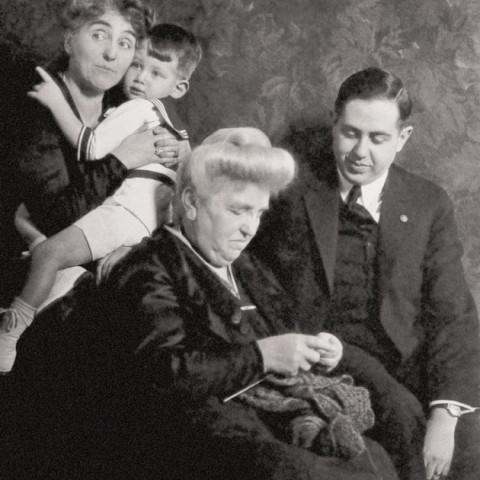 Lloyd and Edna Frank with their son and Lloyd Frank’s grandmother, Jeanette Meier
Lloyd and Edna Frank with their son and Lloyd Frank’s grandmother, Jeanette Meier -
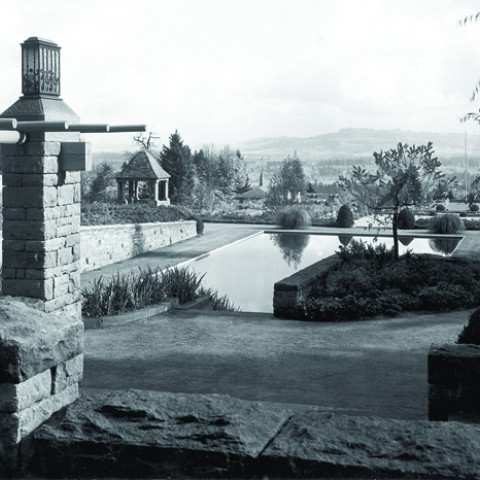 Fir Acres gardens (ca. 1930)
Fir Acres gardens (ca. 1930) -
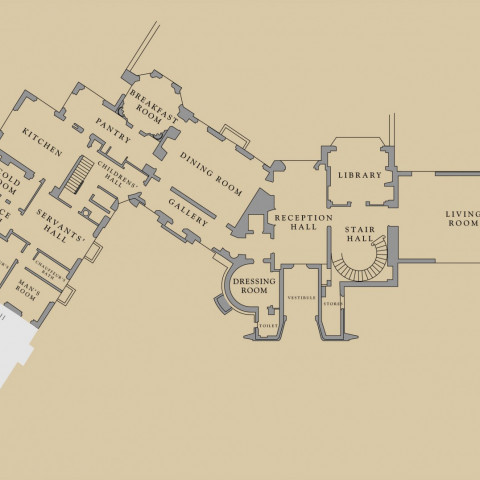 Herman Brookman’s architectural plan, main floor, Frank Manor House
Herman Brookman’s architectural plan, main floor, Frank Manor House -
 Frank Manor House and garden terraces (ca. 1930)
Frank Manor House and garden terraces (ca. 1930) -
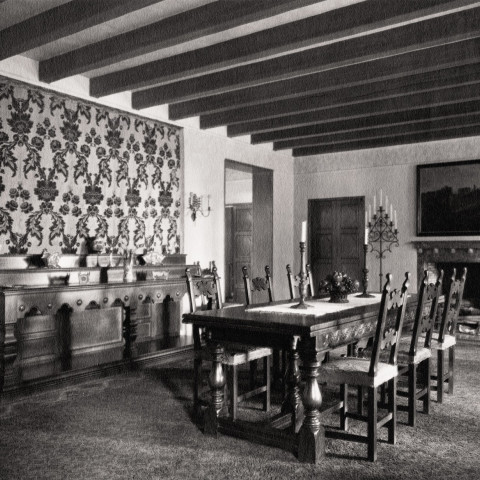 Manor house dining room (ca. 1930)
Manor house dining room (ca. 1930) -
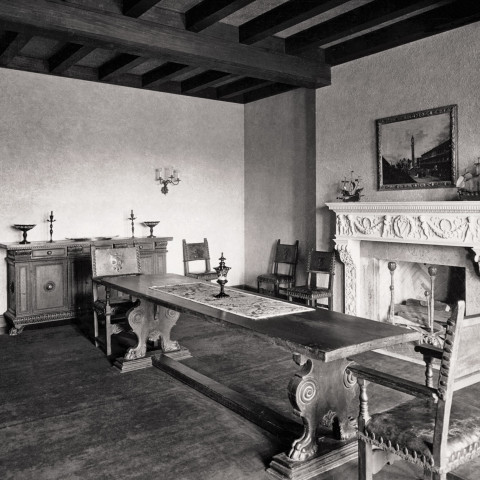 Cooley House (ca. 1928–29)
Cooley House (ca. 1928–29) -
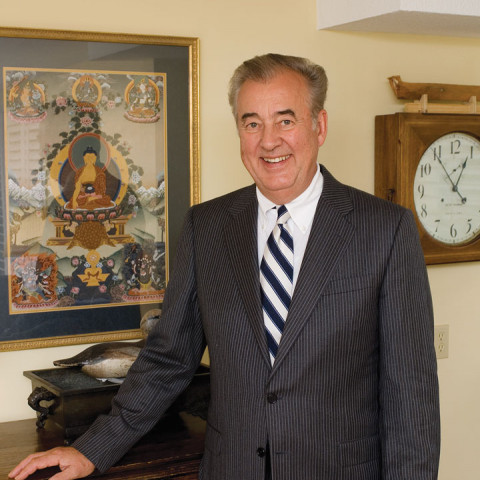 Stephen Dow Beckham, the Dr. Robert B. Pamplin Jr. Professor of History
Stephen Dow Beckham, the Dr. Robert B. Pamplin Jr. Professor of History
Methods Course in Action
Lewis & Clark’s History 300 course, Historical Materials—often taught by Beckham—imbues future historians and art historians with the craft of historical research. “Researching and writing Fortune and Friendship,” Beckham says, “was an opportunity to apply what I have been teaching for the past 32 years about the ‘built environment’ and reading structures as historical documents.”
In researching the book, Beckham used techniques and uncovered sources of the types taught in the course, including survey plats, survey field notes, census population schedules, local histories, newspapers, oral interviews, campus archival holdings of building and landscape plans, and historic photographs. His interview subjects included elderly former neighbors of the three properties as well as 89-year-old Josephine Squires Hazen, who as a child lived in what is now the president’s home. Gerry Frank, nephew of the first owner of Frank Manor House, loaned family photos for the book.
When Beckham was in Washington, D.C., for other research, he says, “I found time to read the voluminous correspondence of the Olmsted Brothers landscape design firm with their Oregon clients between 1903 and 1930.” These papers made clear the extent of the firm’s commissions in Portland. Olmsted Brothers worked on public projects, developing a master plan for Portland parks and designing the grounds of the Lewis and Clark Centennial Exposition, held in 1905. They also created landscaping plans for private properties, including those now known as Lewis & Clark’s Corbett House and Cooley House.
Preserving Treasures for the Future
Beckham’s interest in historic preservation has been longstanding, and his activities in this area all helped to inform his work on the book. In the late 1970s, two of his Historical Materials students researched and wrote the National Register of Historic Places nomination for the Frank Manor and central landscape axis of the campus. In the past 40 years, Beckham has served on the State Advisory Committee on Historic Preservation and on the board of advisors of the National Trust for Historic Preservation. He and other members of Lewis & Clark’s campus master plan committee wrestled with the ongoing question of how best to protect the college’s historic buildings and landscapes.
He has documented more than 2,600 buildings in Oregon’s statewide inventory of historical properties and has written numerous National Register nominations. This background lends authority to his statement that “the three campus estate properties are among the most stunning and special in the state. They are the work of master architects and landscape designers who stressed quality and, of course, tapped the significant wealth of the patrons underwriting the projects.”
As implied by the book’s title, Beckham also wanted to honor the relationships between Lewis & Clark and the homes’ various owners. As he sums it up, “The college, over the decades, has attracted and held the friendship of many who have helped fund the campus. Lewis & Clark, in turn, has acted as a good steward of its properties, respecting the integrity of both buildings and landscapes and working steadily to restore and maintain them as a special place for the institution’s educational enterprises.” ■
Judy McNally, who edits and writes at McNally Editorial in Portland, also served as editor for Fortune and Friendship.
More L&C Magazine Stories
Lewis & Clark Magazine is located in McAfee on the Undergraduate Campus.
MSC: 19
email magazine@lclark.edu
voice 503-768-7970
fax 503-768-7969
The L&C Magazine staff welcomes letters and emails from readers about topics covered in the magazine. Correspondence must include your name and location and may be edited.
Lewis & Clark Magazine
Lewis & Clark
615 S. Palatine Hill Road MSC 19
Portland OR 97219

